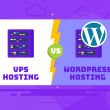Microblogging has been one of the most influential tools on the internet, allowing people to share brief, concise updates and engage audiences in real-time. It blends social media’s immediacy with traditional blogging’s impact, making it ideal for those looking to engage quickly and effectively.
In this blog, we’ll explore microblogging, how it works, the platforms to work with, and how to create and share exciting yet impactful short-form content as a beginner to connect with your audience.
What is Microblogging? The Evolution of Blogging
Microblogging is a direct and concise digital communication. Users often share short, easy-to-understand updates, like those on Twitter or Instagram posts. Microblogging provides an immediate way to connect and interact with the people following an account. Blogging primarily started as a medium for expressing personal thoughts and experiences that were elaborated in their subject content. Most classic blogs had long-form content for detailed study on a particular subject.
Microblogging became popular because it gave the world immediate, fast-moving content. As social media evolved with micro-influencers and nano-influencers, users began to drift to places where they could easily share short messages with an impact, hooking them into real-time engagement and connectivity.
Key Platforms for Microblogging
- Twitter: Probably the best-known microblogging service, Twitter allows users to share updates, news, and thoughts in 280 characters or fewer. It is perfect for real-time communication and trends.
- Tumblr: This site mixes microblogging with multimedia sharing and allows for the publication of text, images, quotes, and video posts. It is great for creative expression and niche communities.
- Instagram: As a social platform, Instagram is among image-based microblogging sites where pictures and videos have captions associated with them. It’s really great for visually oriented-brands/players in this space.
Identify a microblogging platform you think would be best to fulfill your needs based on the type of audience you may already have. You can also create your own platform and ensure your anonymous blog content is backed by reliable and inexpensive web hosting or authentic VPS hosting, allowing you to grow your microblog and make money from it.
Types of Microblogging Content

- Text Posts: These are short, impactful messages or updates. Users can use them to share their thoughts, add updates, or simply provide quick insight. They are good for engaging in conversations and easy dissemination of information.
- Pictures: High-quality photos or graphics that catch the eye are very good for visual storytelling, branding purposes, and engaging followers while using words sparingly.
- Videos: Short clips or reels can successfully convey messages quite dynamically. These can be product demos, behind-the-scenes, or just to have fun with the audience.
- GIFs and Memes: Comic or very relatable content for a large audience. They are often shared to drive quick engagement with the potential to go viral.
- Examples That Work Well: A tweet breaking some news, an Instagram post with a picture and a motivational quote, or even a short piece on TikTok showing how to use something.
Benefits of Microblogging
- Quick Communication: Microblogging is a fast way to publish present and current information in relation to breaking news, live updation, and reaction to occurrences. A user may communicate with his or her followers in a quick time without having to draft a long post.
- Instant Engagement: Microblogging is succinct, so it supports instant response through liking, sharing, and commenting. It creates a dynamic exchange.
- Building a Community: Short-form content ensures regular contact with the audience and maintains a loyal following. It even gives room to post updates regularly, thereby ensuring the committed community remains updated and engaged.
Elevate Your Microblogging With Reliable Hosting!
Boost your microblogging success with reliable blog hosting from UltaHost. Ensure fast, secure, and seamless content performance. Choose UltaHost for hosting that supports your growth and keeps your microblogging journey running smoothly.
Microblogging vs Traditional Blogging
Content creation and engagement are very different with microblogging examples compared to traditional blogging. Microblogging is generally short and concise due to the fact that it is really quick to create and easy to consume, making it very suitable for real-time communication. On microblogs, engagement is usually immediate, with users liking, commenting, and sharing sometimes within seconds of the post.
Traditional blogging consists of longer and more detailed content, which enables in-depth explorations of topics and attracts readers who seek thorough insights into them. The choice between microblogging and traditional blogging should be based on the writer’s aims and audience.
Microblogging is the way to go if you provide timely updates, want to relate to followers often, or desire a consistent posting schedule. However, if your aim is to provide in-depth analysis, establish yourself as an authority on the subject, or write more thought-provoking material that needs detailed explanation, traditional blogging will be the better option.
Microblogging for Personal Branding
Microblogging is a powerful way to establish your voice in short-form content. If you keep posting continuously and consistently write your original thoughts, reflections, and insights, you will begin to create a unique online persona that others can relate to. Its brevity forces you to be clear and impactful in your message, making you stand out in a dynamic digital world.
Be it smart tweets or creative, eye-catching Instagram posts, microblogging enables the development of a voice specifically for you or your business in a way nobody else could. Using microblogging as a personal growth writing tool, you can network, show your peers what you are good at, and master the art of connecting with like-minded individuals.
Active participation, the sharing of valuable content, and consistency can grow your influence and credibility in the niche. Microblogging allows real-time feedback so that you can reshape tactics and continue the organic growth of the brand.
Microblogging for Businesses
Businesses use microblogging for instant communication with customers. By posting quick updates, promotions, and attention-grabbing announcements that call for instant action, brands can use the channel to the fullest. Companies can also build brand awareness in the feeds of their followers to nurture leads.
By using Twitter or Instagram, businesses are able to meet their audience with the appropriate form and length of content. Successful business microblogs are all the proof you need of the magic of small, bite-sized content. For example, Wendy’s has raked in some good publicity with its pithy, often hilarious tweets, setting up a strong brand character that really speaks to young people.
Another example is Nike on Instagram, which uses motivational content to tell customer stories to drive community engagement for its brand. These case studies represent some of the businesses that effectively use microblogging to enhance their marketing efforts and relate more to the target audience.
Tips for Effective Microblogging
- Concise: Craft your blog beautifully with a focused message; every word is intended to create impact, making the content easy to digest.
- Use Visuals: Add an image, a GIF, or a video to increase engagement. Visuals tend to attract better compared to pure text.
- Include a Call to Action: Add calls for action with your post, asking your audience for likes, shares, or comments. A good call to action is engaging and extends your reach.
- Post regularly: The frequency of your posts will directly influence the level of interest shown by your audience. Regular updating instills anticipation and loyalty.
- Analysis of performance: Using analytics, track which posts work best to tailor your strategy by what holds most relevance with your audience.
Challenges in Microblogging
- Simplification: The risk here, given the limited space, is the oversimplification of complex ideas. Make sure that your message is clear and meaningful, even in a very reduced form.
- Inconsistent Posting: To keep your audience interested, avoid infrequent updates. Combat this by creating a content calendar and sticking to a regular posting schedule.
- Over-posting: Post very often so as to be manageable for the followers. Find an equilibrium to keep your audience delighted without inundating them unwillingly.
- Quality vs. Quantity: The pressure to post often may let down your guard on quality at times. It is important to pay great attention when writing and designing thoughtful posts; this will set your brand apart.
- Engagement Management: Engaging with the comments and the folks interested in them are also time-bound. Schedule your times to engage with your audience to keep the interaction going.
Microblogging Etiquette
While microblogging, one has to ensure that the etiquette continues to reflect positively and professionally. Posts should be respectful, clear, and relevant to the audience; appropriate language is a must. Moreover, the information that you want to share or post also has to be fact-checked. Some of the etiquette are as follows:
- Do not spam your followers by posting excessively
- Keep away from controversial subjects unless they align with one’s Brand Voice
- It also requires consistency in tone and style so that it establishes a recognizable, trustworthy brand
- Comments and feedback need keen attention
- Respond politely to all, be it negative or positive comments, with constructive concern towards it.
Interacting with your audience shows respect for their input and makes them feel a part of the community. However, reverse some heated disagreements or impulsive reactions to uplift your brand’s image. Stay calm and professional, focusing only on positive interactions.
Conclusion
Microblogging has become a very powerful tool in the digital era, building a platform for fast, effective, and audience-oriented communication. Companies or users can post small messages to instantly engage followers, build community, and gain an online identity.
By understanding the evolution, benefits, and challenges of microblogging, you can use this form of content to power up your brand or personal voice effectively. As you begin to microblog, do not only choose the right platform but also build consistently with an eye on quality. On its own, guided by the correct strategy, microblogging can enhance your digital strategy by engaging with your audience in relevant ways.
Enhance your microblogging journey with a .blog domain from UltaHost. It’s the perfect way to establish your unique online presence and connect with your audience through powerful, concise content.
FAQ
What is Microblogging?
Microblogging is a digital mode where users send short, self-explanatory messages, normally limited in character count, across internet-based platforms like Twitter and Instagram.
How does microblogging differ from traditional blogging?
While microblogging deals with shorter and real-time updates, traditional blogging involves longer and more detailed content.
What platforms are best for microblogging?
Some popular microblogging platforms include Twitter, Instagram, Tumblr, and TikTok.
What type of content can one post on microblogs?
Microblogging permits sharing text posts, images, videos, GIFs, and links.
Why should I consider microblogging for personal branding?
Microblogging can help with quick personal branding: it allows for a peculiar voice and quicker engagement with an audience.
What are the benefits of microblogging for businesses?
Businesses can facilitate microblogging to communicate quickly, engage in real time, and construct a strong community around their brand.
What are some challenges of microblogging?
These include ensuring the quality of content, avoiding over-simplification, and managing posting schedules.


















